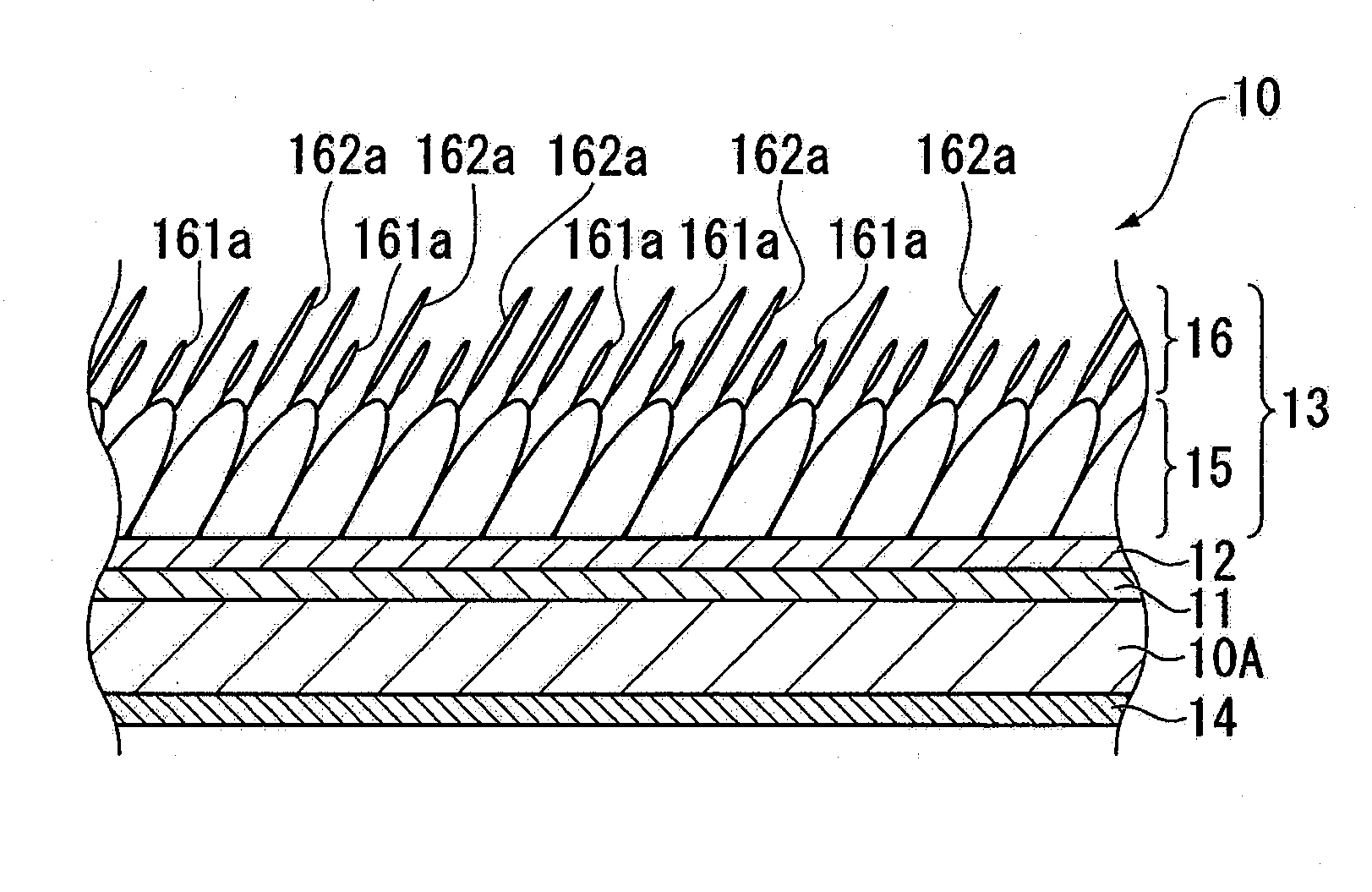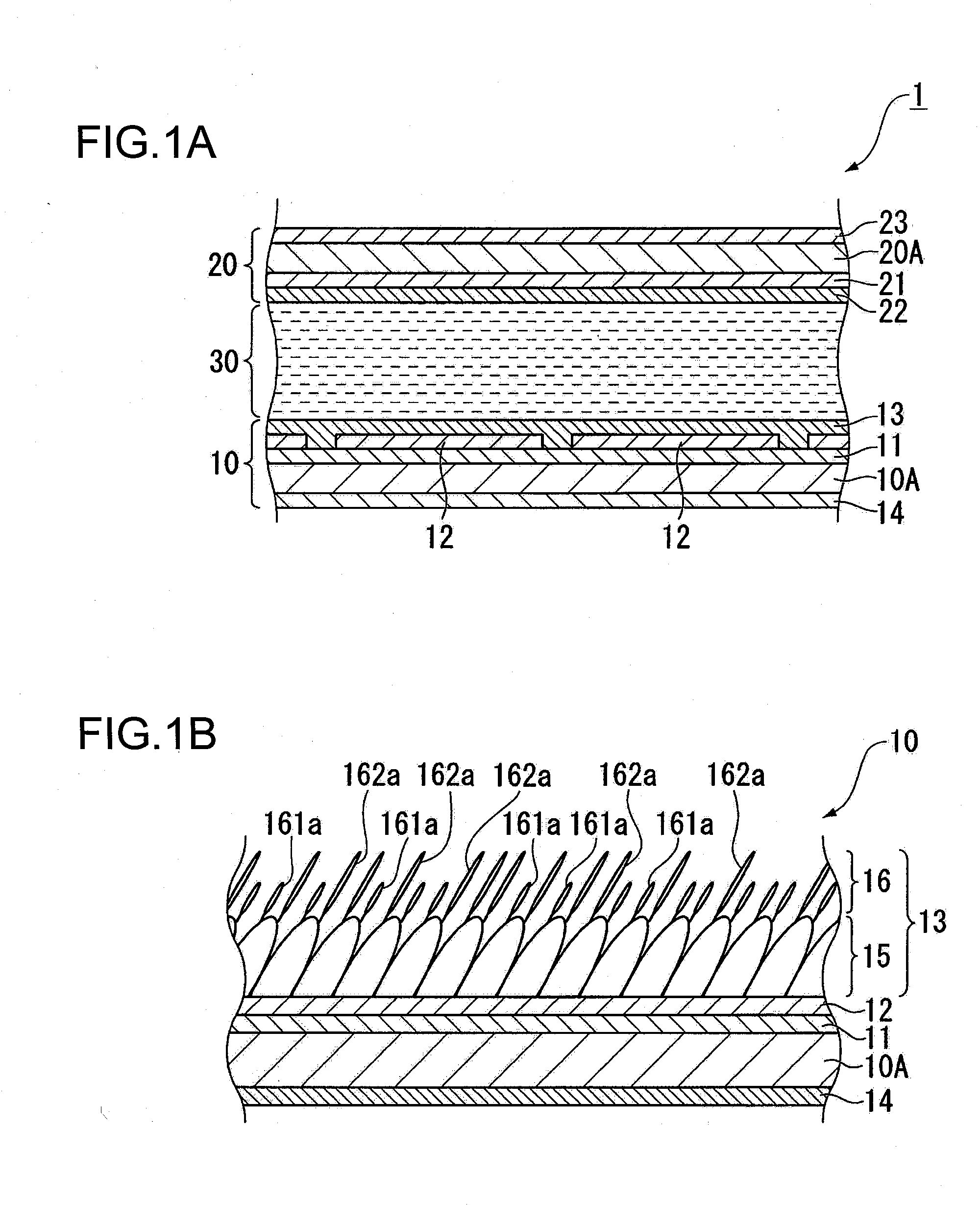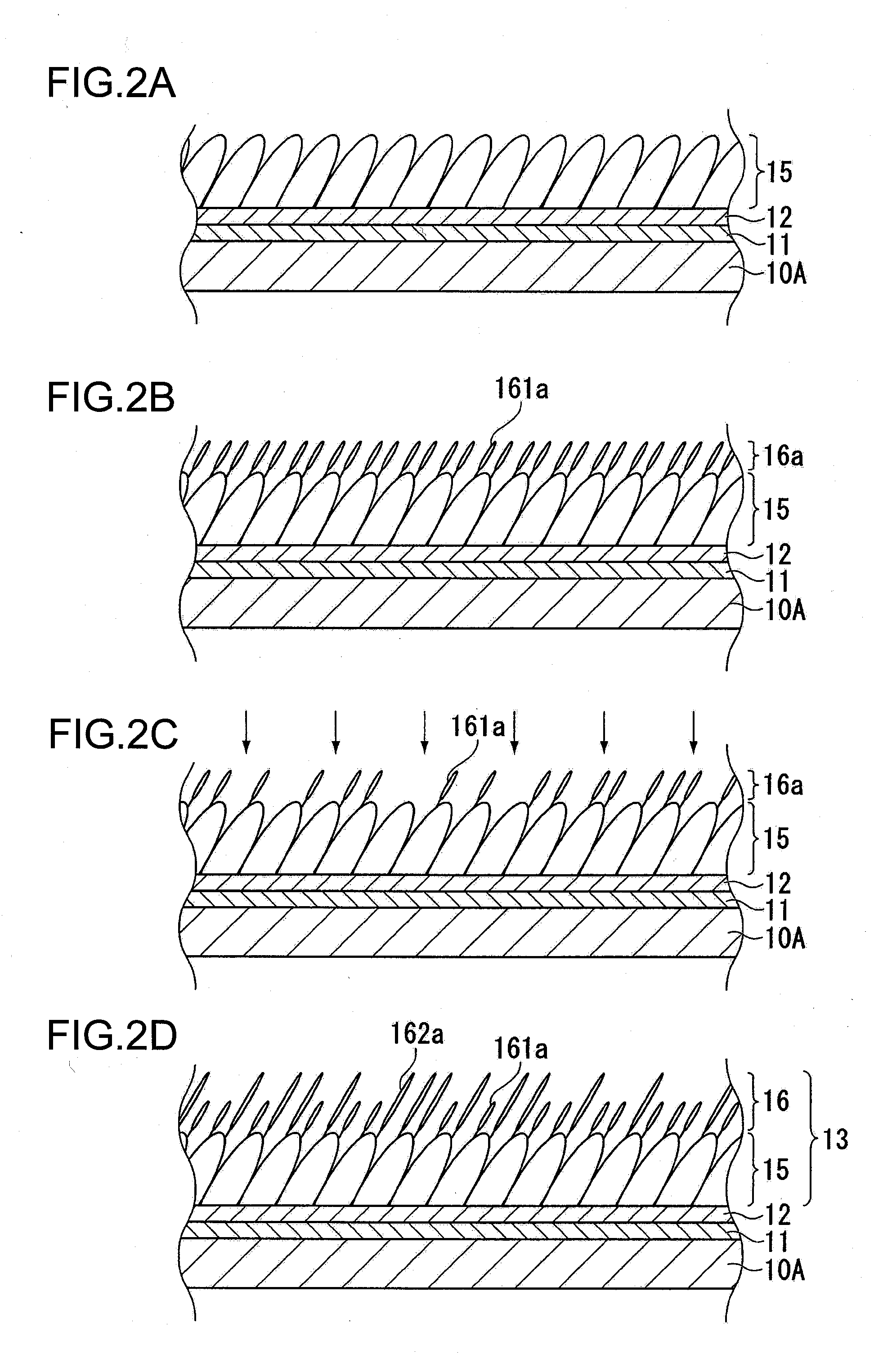Method of manufacturing liquid crystal device
a liquid crystal device and manufacturing method technology, applied in the field of liquid crystal device manufacturing, can solve the problems of easy display defects, degradation of yield, and difficulty in obtaining uniform orientation or in partially controlling orientation, and achieve the effects of reducing the burden of selecting the silane-coupling agent, high coverage factor, and easy manufacturing
- Summary
- Abstract
- Description
- Claims
- Application Information
AI Technical Summary
Benefits of technology
Problems solved by technology
Method used
Image
Examples
Embodiment Construction
[0032]Although an embodiment of the invention will hereinafter be explained, the technical scope of the invention is not at all limited to the following embodiment. Although in the following explanations various structures are exemplified with reference to the drawings, for the sake of easy understanding of characteristic portions of the structure, the structure in the drawings may be illustrated with the size or the scale different from the actual structure. Prior to a method of manufacturing a liquid crystal device of the present embodiment, an example of the liquid crystal device manufactured with the present invention will firstly be explained.
[0033]FIG. 1A is a cross-sectional view showing an example of the liquid crystal device manufactured using the invention, and FIG. 1B is a schematic diagram enlargedly showing an oriented film. As shown in FIG. 1A, the liquid crystal device 1 of the present embodiment is provided with an element substrate 10 (one substrate), an opposed sub...
PUM
| Property | Measurement | Unit |
|---|---|---|
| temperature | aaaaa | aaaaa |
| wavelength | aaaaa | aaaaa |
| time | aaaaa | aaaaa |
Abstract
Description
Claims
Application Information
 Login to View More
Login to View More - R&D
- Intellectual Property
- Life Sciences
- Materials
- Tech Scout
- Unparalleled Data Quality
- Higher Quality Content
- 60% Fewer Hallucinations
Browse by: Latest US Patents, China's latest patents, Technical Efficacy Thesaurus, Application Domain, Technology Topic, Popular Technical Reports.
© 2025 PatSnap. All rights reserved.Legal|Privacy policy|Modern Slavery Act Transparency Statement|Sitemap|About US| Contact US: help@patsnap.com



